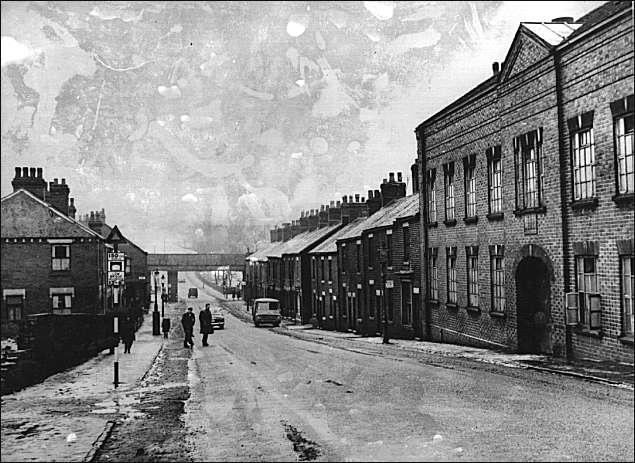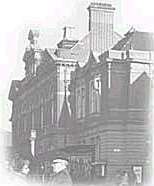| Tunstall - one of the Six Towns of Stoke-on-Trent |
|
Tunstall
|
| Tunstall - one of the Six Towns of Stoke-on-Trent |
|
Tunstall
|
"It was the winter of 1835, January. They passed through the marketplace of the town of Turnhill, where they lived. Turnhill lies a couple of miles north of Bursley. One side of the market-place was barricaded with stacks of coal, and the other with loaves of a species of rye and straw bread. This coal and these loaves were being served out by meticulous and haughty officials, all invisibly braided with red-tape, to a crowd of shivering, moaning, and weeping wretches, men, women and children - the basis of the population of Turnhill." Arnold Bennett | Arnold Bennett's Tunstall |

`Furlong Road` (Tunstall) looking from Christ
Church at the top of Tunstall High St. towards Pittshill.
on the right is the Greengates pottery works of William Adams & Sons
The bridge
in the picture carries a spur line used to transport
raw materials (clay, etc) to Newfield Pottery via Tunstall.
The Loop Line bridge is out of sight over the next hill.
To the right is the Adams Greengates Pottery Works
|
Tunstall is the most
northern town of the city. Historians have found that iron was being
produced in the town as far back as 1280. It stands on a ridge surrounded
by old tilemaking and brickmaking sites, some of which probably date back
to the late middle ages. Lord of the Manor Walter Sneyd, Esq. of Keel, was lord of the manor. "TUNSTALL is a considerable village within the township of Tunstall Court, a liberty in the parish of Wolstanton, four miles from Newcastle, pleasantly situated on an eminence, deriving its name from the Saxon word, tun or ton, a town, and stall, an elevated place, seat or station." "In this township abounds coal,
ironstone, marl and fine channel coal; and the manufactories of
earthenware are very extensive here." Dates in the history of Tunstall 1282 -
References to coal mining at Tunstall.
|
 Tunstall Town Hall Tunstall has had two Town Halls The original was demolished in 1892. Tunstall's second Town Hall was completed in 1885.
|